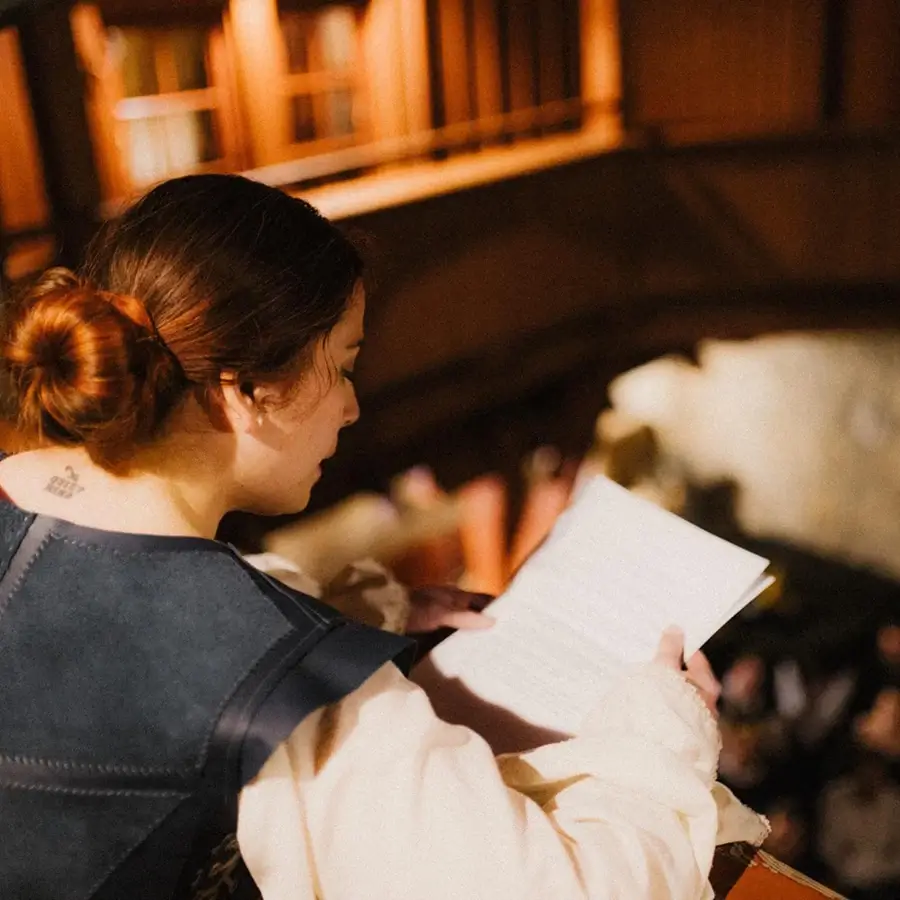Epic Armoury’s Beginner’s Guide to LARP
Welcome to Live Action Role-Playing (LARP), where imagination meets reality. Whether you want to become a hero, villain, or mythical creature, LARP offers a space to explore new identities and tell collaborative stories. This guide will walk you through the essentials of LARP, from the basics of character creation to understanding its many genres.
In this video, Sonja focusses on mass Battle larps and explains the basics.
What is LARP?
LARP, short for Live Action Role-Playing, is a form of interactive storytelling in which participants physically portray characters in real-world settings. Think of it as an immersive theatre experience mixed with improvisational acting, impersonation, and sometimes gameplay of tabletop role-playing games like Dungeons & Dragons. Players portray characters with unique backstories and goals while navigating a plot or story crafted by Game Masters (GMs) / plot writers who serve as both directors and storytellers. These events range from small, local gatherings to larger, multi-day festivals with hundreds or thousands of participants.
The Basics of LARP
At its core, LARP is a collective activity where participants assume roles within a pre-designed narrative. The organisers handle logistics, while Game Masters (GMs) manage the plot and control the Non-Player Characters (NPCs)—characters who push the story forward, such as merchants, enemies, or royalty. Player Characters (PCs) are the participants, taking on the story’s leading roles. Often, the larp creators will assume both the roles of organiser and game master.
LARP events come in many sizes and themes, offering a wide range of experiences. These can include everything from large-scale fantasy battles and dystopian sci-fi adventures to socio-realistic explorations, historical epics, and adventurers in world-renowned IPs such as The Witcher universe. This diversity lets players immerse themselves in different worlds and roles, all while following structured rules designed to ensure fairness, safety, and enjoyment for everyone involved.

Lisa Wolfrum, Game Master and organiser, reading out instructions to players at Dawn at Kaer Seren, a Witcher LARP by Charmed Plume Productions. Picture by Dagmara Kunecka
Suggested reads:
"Thousands of people around the world do live-action role-playing to learn and change themselves. I am one of them."
LARPing made me a stronger person, it can do the same for you too
- by Ericka Skirpan
"(...) for some the experiences brought about intense emotional and personal realizations that led to long-term changes in their work and relationships."
LARPing has more intense effect than other entertainment
- by University of Sydney
Edu-LARP is a subgenre of LARP that uses immersive role-play as a tool for educational purposes.
Fostering creativity, empathy and self-regulation through story-based educational role-play
- by Lisa Gjedde, Aalborg University
The Benefits of LARP
LARPing offers several unique advantages:
- Physical and Mental Engagement: LARPing provides both a mental and physical challenge, from sword-fighting to problem-solving.
- Community and Connection: LARP is inherently social, and players often form deep connections through teamwork and shared experiences.
- Inclusivity: LARPing welcomes people from all backgrounds, offering a safe space to explore different identities and experiences.
- Self development: LARP creates a safe environment where you are supported to experiment with things you’d not dare to do in real life, such as public speaking.
Whether you’re in it for the adventure, the physical challenge, or the opportunity to develop a character, LARP provides a multi-dimensional experience.
Finding Your Ideal LARP
With so many types of LARP available, finding one that suits your interests is essential. Combat LARPs focused on large-scale battles if you're drawn to action. If you're more intrigued by social dynamics, a Political LARP may be a better fit, allowing you to engage in strategic role-play.
LARPs come in various genres, from fantasy to sci-fi, horror, and historical reenactment. You can discover what excites you most by attending different events: character drama, physical combat, or deep storytelling.

Picture by Rekografia at Krigslive, Denmark

Signing of the peace treaty between England and France at A Meeting of Monarchs, a Renaissance larp by Charmed Plume Productions. Picture by Oliver Facey.
Types of LARP
The beauty of LARP lies in its diversity. Below, we explore some prominent types and styles of LARP. It’s worth noting that many LARPs blend different styles to create unique experiences.
For example, the international LARP Meeting of Monarchs, inspired by the historic Field of the Cloth of Gold, merges elements of Nordic, Historical, and Relational-drama LARP.
- Combat LARP (Boffer):
These games emphasize physical combat, using foam weapons, with a focus on martial skills and strategy. - Relational-Drama LARP:
Focused on storytelling and social interaction, these games often involve negotiation and symbolic actions, rather than physical combat. - Sandbox LARP:
Offers significant freedom for players to create their own stories within a loose framework, allowing for more player-driven experiences. - Blockbuster LARP:
Characterized by high production values, spectacular locations, and often international participation, these events are linked to established fandoms and tend to have high ticket costs. - Nordic LARP:
Known for its emotional depth, these games prioritize immersive storytelling and character development, often with minimal rules and intense emotional experiences. - Festival LARP:
These large-scale events blend the atmosphere of a festival with immersive gameplay, often drawing thousands of participants for continuous, in-game experiences.
Campaign vs. Scenario LARPs:
Campaign LARPs feature ongoing stories where players can return to the same character across multiple events. Scenario LARPs, on the other hand, are standalone experiences. While reruns occur, each time offers the same core experience, often from a new character’s perspective.
Costumes and Gear
For most larps, costuming plays a crucial role in creating an immersive atmosphere. When participants wear medieval armour, cloaks, or detailed robes, it helps bring the world to life. Players are encouraged to leave modern technology out of sight to maintain the historical or fantastical setting. Newcomers can start with simple costumes, which can be assembled on a budget, while more experienced players might invest in elaborate outfits over time.

Gabriele Stazi (our First Fashioneer)'s costume progression. From novice to professional kit.

Picture taken by Dagmara Kunecka at Dawn at Kaer Seren, a Witcher LARP by Charmed Plume Productions.
Mechanics in LARP
Each LARP has its own set of rules that govern combat, character interactions, and how certain events unfold. These mechanics explain how to interact with the fictional world and your co-players. They ensure the game runs smoothly, providing structure on physical activities (like combat) or emotional safety (like negotiating a scene with a difficult topic). Understanding a LARP’s mechanics will help you navigate the narrative and the physical world.
Mechanics are used to drive the plot and ensure player safety—both physically and emotionally—by setting clear boundaries for actions and interactions.
Is LARPing Expensive?
LARPing can be as affordable or as expensive as you make it. For newcomers, costs can be kept low, especially if participating as an NPC (where costumes and roles are often provided). Starter costumes can be assembled for less than €100, though seasoned players may invest in more intricate gear and armour. Participants might need to bring period-appropriate camping gear for larger events, which can increase costs, but many groups offer budget-friendly options.
Thrifting can get you pretty far. For those looking for new gear, we have created the Ready For Battle line to get you started on a small budget. You can also check out our Scavenger Deals, discounted mystery boxes filled with remnants found on and off the battlefield.
In LARP we create stories together for ourselves and for those around us. It is like stepping onto the set of your favorite movie, but without the cameras. Video of ConQuest of Mythodea by Sonja's Adventures.
Immersion and Storytelling
At its heart, LARP is about immersion—becoming part of a world where your actions and choices shape the story. Whether you're a mage casting spells, a knight defending a fortress, or a diplomat brokering peace between rival factions, LARPing allows you to explore new identities and embark on epic adventures.
Every event is a shared storytelling experience. Players come together to solve puzzles, defeat monsters, or navigate political intrigue. The most memorable LARP experiences are often created through collaboration, where characters’ decisions ripple through the game and influence the story's outcome.
Whether you’re drawn to combat, political intrigue, or deep character exploration, LARP has something to offer everyone.
It’s a place where creativity, community, and adventure unite, allowing you to live out your wildest fantasies.
Ready to step into a new world?
The adventure awaits!

 Denmark
Denmark
 United States
United States
 United Kingdom
United Kingdom
 Germany
Germany
 Sweden
Sweden
 Norway
Norway
 Åland
Åland
 Australia
Australia
 Austria
Austria
 Belgium
Belgium
 Brazil
Brazil
 Bulgaria
Bulgaria
 Canada
Canada
 Canary Islands
Canary Islands
 Chile
Chile
 China
China
 Croatia
Croatia
 Cyprus
Cyprus
 Czech Republic
Czech Republic
 Estonia
Estonia
 Faroe Islands
Faroe Islands
 Finland
Finland
 France
France
 Greece
Greece
 Greenland
Greenland
 Hungary
Hungary
 Iceland
Iceland
 India
India
 Indonesia
Indonesia
 Ireland
Ireland
 Israel
Israel
 Italy
Italy
 Japan
Japan
 Kuwait
Kuwait
 Latvia
Latvia
 Lithuania
Lithuania
 Luxembourg
Luxembourg
 Malaysia
Malaysia
 Malta
Malta
 Mexico
Mexico
 Montenegro
Montenegro
 Nepal
Nepal
 Netherlands
Netherlands
 New Zealand
New Zealand
 Pakistan
Pakistan
 Peru
Peru
 Poland
Poland
 Portugal
Portugal
 Georgia
Georgia
 Reunion
Reunion
 Romania
Romania
 Serbia
Serbia
 Singapore
Singapore
 Slovakia
Slovakia
 Slovenia
Slovenia
 South Africa
South Africa
 South Korea
South Korea
 Spain
Spain
 Switzerland
Switzerland
 Taiwan
Taiwan
 Turkey
Turkey
 Ukraine
Ukraine
 Puerto Rico
Puerto Rico
 Honduras
Honduras
 Gibraltar
Gibraltar